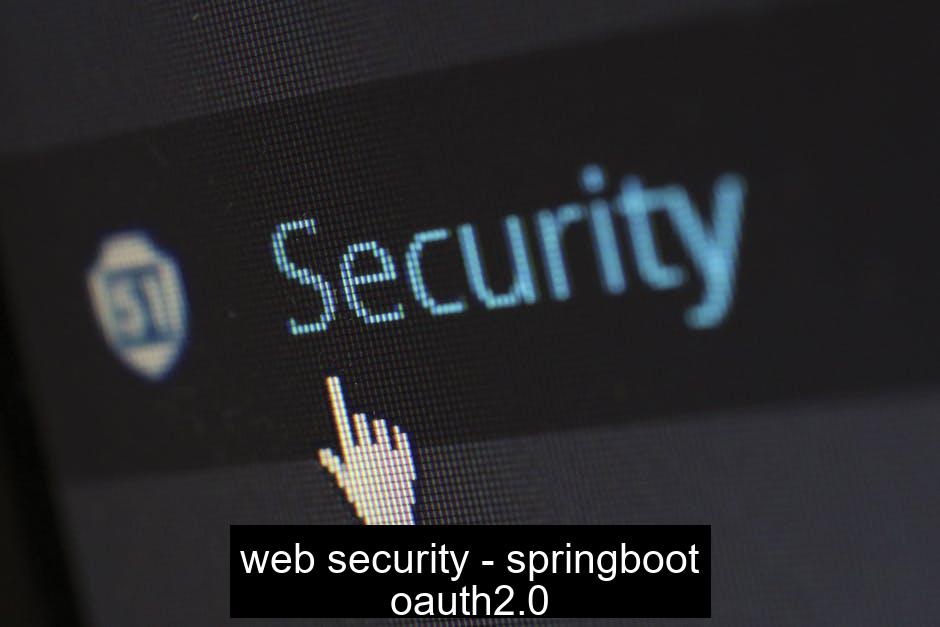OAuth2 Implementation in Spring Boot

1️⃣ Introduction
OAuth2 is a widely used authorization framework that enables secure access to resources. This article explores how to implement OAuth2 in Spring Boot applications.
Key features include:
- Authorization Server setup
- Resource Server configuration
- Client registration
- Token management
- Scope-based access control
2️⃣ Key Concepts & Terminology
- Authorization Server: Issues access tokens
- Resource Server: Hosts protected resources
- Client: Application requesting access
- Access Token: Credential for accessing resources
- Scope: Permission level for access
3️⃣ Hands-on Implementation 🛠
🔹 Step 1: Authorization Server Setup
@Configuration
@EnableAuthorizationServer
public class AuthorizationServerConfig extends AuthorizationServerConfigurerAdapter {
@Autowired
private AuthenticationManager authenticationManager;
@Override
public void configure(ClientDetailsServiceConfigurer clients) throws Exception {
clients.inMemory()
.withClient("client")
.secret(passwordEncoder().encode("secret"))
.authorizedGrantTypes("password", "refresh_token")
.scopes("read", "write")
.accessTokenValiditySeconds(3600)
.refreshTokenValiditySeconds(86400);
}
@Override
public void configure(AuthorizationServerEndpointsConfigurer endpoints) {
endpoints
.authenticationManager(authenticationManager)
.userDetailsService(userDetailsService);
}
@Bean
public PasswordEncoder passwordEncoder() {
return new BCryptPasswordEncoder();
}
}🔹 Step 2: Resource Server Configuration
@Configuration
@EnableResourceServer
public class ResourceServerConfig extends ResourceServerConfigurerAdapter {
@Override
public void configure(HttpSecurity http) throws Exception {
http
.requestMatchers()
.antMatchers("/api/**")
.and()
.authorizeRequests()
.antMatchers("/api/public/**").permitAll()
.antMatchers("/api/admin/**").hasRole("ADMIN")
.anyRequest().authenticated();
}
@Override
public void configure(ResourceServerSecurityConfigurer resources) {
resources.resourceId("api");
}
}🔹 Step 3: Client Application
@Configuration
public class OAuth2ClientConfig {
@Bean
public OAuth2RestTemplate oauth2RestTemplate(
OAuth2ClientContext oauth2ClientContext,
OAuth2ProtectedResourceDetails details) {
return new OAuth2RestTemplate(details, oauth2ClientContext);
}
}
@Service
public class ResourceService {
@Autowired
private OAuth2RestTemplate oauth2RestTemplate;
public String getProtectedResource() {
return oauth2RestTemplate.getForObject(
"http://resource-server/api/protected",
String.class
);
}
}4️⃣ Common Issues & Debugging 🐞
Common Issues and Solutions
| Issue | Solution |
|---|---|
| Token validation failures | Verify token configuration and signing key |
| Scope validation errors | Check client scope configuration |
| Authentication failures | Verify client credentials |
5️⃣ Q&A / Frequently Asked Questions
OAuth2 is an authorization framework, while JWT is a token format. OAuth2 can use JWT for tokens, but it's not required.
Configure refresh token grant type and implement token refresh logic in the client application.
6️⃣ Best Practices & Pro Tips 🚀
- Use HTTPS in production
- Implement proper token storage
- Set appropriate token validity
- Use secure password hashing
- Implement proper error handling
- Regular security audits
7️⃣ Read Next 📖
8️⃣ Conclusion
OAuth2 implementation in Spring Boot requires understanding of authorization server, resource server, and client configurations. Proper setup ensures secure access to protected resources.
Remember to follow security best practices, implement proper token management, and regularly audit your security configuration.